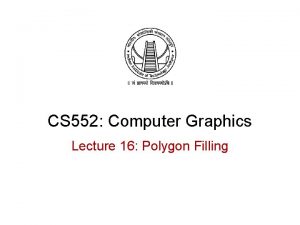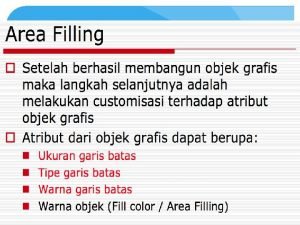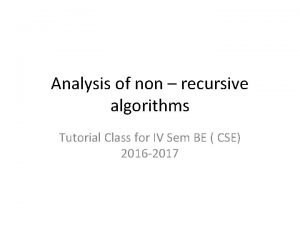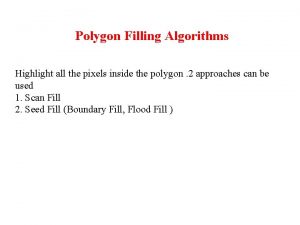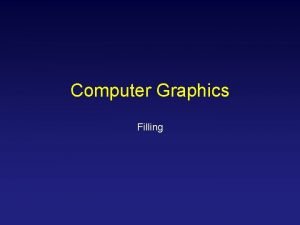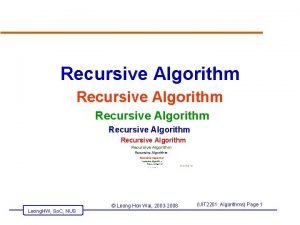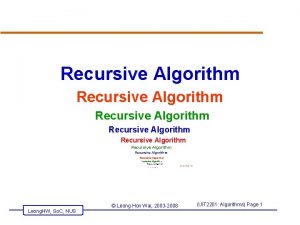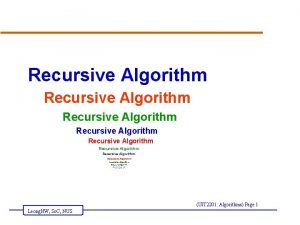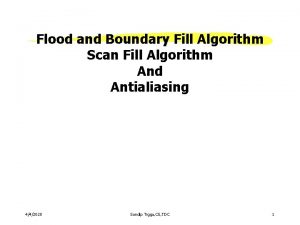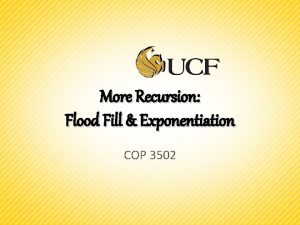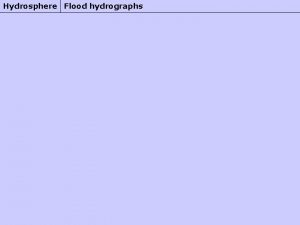The Flood Fill Algorithm A recursive graphics algorithm








- Slides: 8

The “Flood Fill” Algorithm A recursive graphics algorithm used to fill in irregular-shaped regions with a solid color

Region Boundaries • We often want to “color” regions which are defined by an irregular-shaped boundary • Our earlier “scanline-fill” algorithm worked well for regions with boundaries defined by straight line-segments, or by circular arcs • But more complicated regions could lead to programming difficulties if the scanline approach is taken

An irregular region

Alternative: simple recursion • A “recursive” approach may be simpler • It works by successively reducing a very complicated problem to one that is just a little bit easier to solve • We apply that idea to a graphics problem: coloring the interior of an irregular region

A flood-fill algorithm void fill( int x, int y, interiorcolor, int newcolor ) { if ( get_pixel( x, y ) == interiorcolor ) { put_pixel( x, y, newcolor ); fill( x -1, y, interiorcolor, newcolor ); fill( x+1, y, interiorcolor, newcolor ); fill( x, y -1, interiorcolor, newcolor ); fill( x, y+1, interiorcolor, newcolor ); } }

Demonstration setup • • We need a way to create irregular regions We will do it by using “bezier curves” We subdivide the viewpoint into quadrants We form a bezier curve in each quadrant These bezier curves will connect together First and last control-points are mid-axes Other control-points are randomly chosen

Four bezier curves viewport

Demo-program • • Our ‘flood. cpp’ demo implements this idea You can find it on our course website It does all of its drawing on page 0 But you might want to draw to page 1, and then afterward copy from page 1 to page 0 • That avoids your user seeing the effects of a “slow” drawing operation in-progress
 Is the process of filling image or region
Is the process of filling image or region Boundary fill algorithm in computer graphics
Boundary fill algorithm in computer graphics Perbedaan boundary fill dan flood fill
Perbedaan boundary fill dan flood fill Area filling
Area filling Analysis of non recursive algorithm
Analysis of non recursive algorithm Polygon filling algorithm
Polygon filling algorithm Edge table in computer graphics
Edge table in computer graphics Character attributes in computer graphics
Character attributes in computer graphics Graphic monitor and workstation in computer graphics
Graphic monitor and workstation in computer graphics

